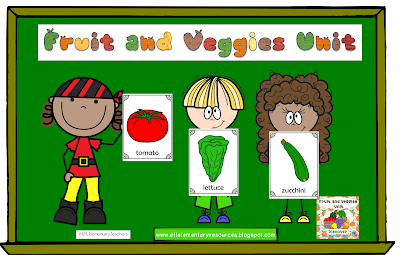This (Thanksgiving Colors Activities for Elementary ESL: Flashcards, Games & Worksheets) resource is also included here: https://www.teacherspayteachers.com/Product/Colors-Unit-for-Elementary-ELL-Starters-3629423
Reviewing colors in
a Thanksgiving setting introduces cultural elements while keeping vocabulary
familiar. It gives learners an opportunity to use English meaningfully while
exploring traditions.
The
Thanksgiving monster help students with vocabulary retention. Students can
write sentences about each monster Flashcard.
The
flashcards can be sorted into person or thing.
Small
cards can be used them for matching
activities that keep students engaged while practicing language.
Color
Match and Say. Place the pumpkin pie color
cards face up. Give students color word cards (or say a color aloud). Students
find and point to or hold up the matching pumpkin pie, saying: “This is the orange pumpkin pie.” “I see a brown pumpkin pie.”
Thanksgiving colors worksheets 1.
Students
read or listen and color the pies correctly.
Skills: reading comprehension, color recognition, following directions.
Worksheet 2. Seeing
the color word and applying it through coloring helps students remember it
better. If possible go over the items in a cornucopia.
Worksheet 3. The tasks are simple and achievable, giving young learners confidence as they correctly follow instructions and see a colorful final product they can be proud of.
Thanksgiving
Colors Puzzle Game. Students practice
reading simple color phrases repeatedly, helping them recognize sight words
like a, blue, red, and pumpkin.
Thanksgiving
Colors Board Game. Students
take turns rolling a die and moving along the path filled with colorful
pumpkins. When they land on a space, they read
the color word or sentence aloud — for example, “a green pumpkin” or “This
pumpkin is orange.”
The
teacher can also ask students to find and show the matching color card or color
a small pumpkin on their pumpkin worksheet, seen above.
A
pocket chart activity with color phrases like “a red pie” is
perfect for hands-on sentence building and reading practice. Once all matches are made, read them
together as a class for pronunciation and rhythm practice.
Including
letter tiles for writing color words adds a
strong literacy and spelling component to your lesson plan. Students practice
letter recognition and sound-letter connections while building color words.
These are reusable for other Thanksgiving lessons.
Thanksgiving
Colors “Feed Me Box” Activity. Prepare the box
using the pumpkin pie template. Students cut out the pumpkin pies from the
worksheet — each one showing a different color. The teacher places the box at
the front of the class or at a learning station.
Teacher: A blue pumpkin
pie!
Students
find the matching pumpkin pie and “feed” the box by dropping it inside.
Encourage
students to say the sentence as they feed it, for example:
“This is a green pie.”
Continue
until the box is full of deliciously colorful pies!
There is also Halloween Colors included in this resource: https://eflelementaryresources.blogspot.com/2025/09/halloween-colors-activities-for.html
Follow
me at Holistic English Resources by Rosa Amelia!
Discover engaging, creative, and effective resources designed specifically for English
Language Learners! Find:
- Ready-to-use
lesson plans and activities
- Creative
flashcards, worksheets, and games
- Time-saving,
fun, and interactive resources


































































